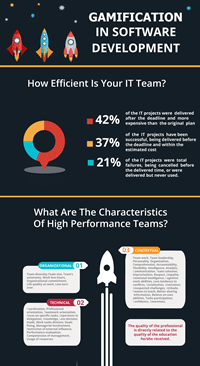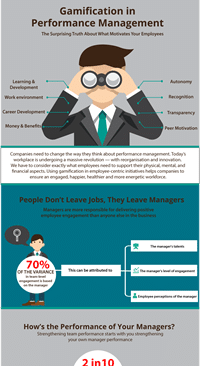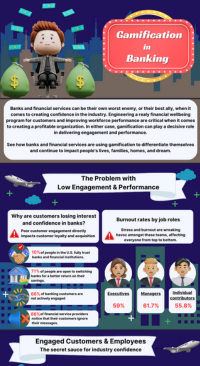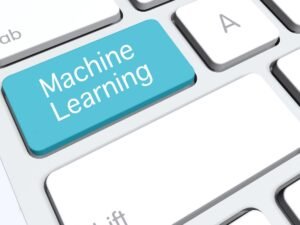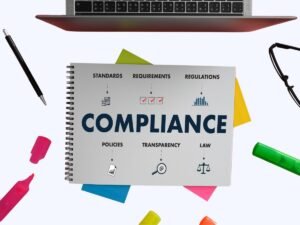Gamification in Business Infographic

Share the Gamification in Business Infographic On Your Site
Copy and paste the code below on your site to embed the gamification in business infographic.
<strong>Please include attribution to https://mambo.io/ with this graphic.</strong><br>
<a href="gamification-in-business-infographic?utm_source=Mambo&utm_medium=infographics&utm_campaign=gamification%20in%20business"><img src="/s/img/wp-content/uploads/2019/04/gamification_in_business_infographic.png" width="800px" border="0" loading="lazy" style="background-image:url('data:image/gif;base64,R0lGODlhAgAEAKIAAKyepJy+vMzGpKS6vMSinKS+xNTW1AAAACH5BAEAAAcALAAAAAACAAQAAAMGCDVBYiYBADs=');background-repeat:no-repeat;background-size:cover" onload="this.style.removeProperty('background-image')"></a>
Gamification in Business Infographic
Discover how to motivate actions that add value to your business using Gamification and engage your employees like never before!
What is Enterprise Gamification?
Enterprise gamification is the process of integrating game elements and psycological principals into an existing system. This system can be a website, an existing enterprise software, an app or an online community.
The aim is to engage people and motivate them to change behaviours, develop skills or solve problems.
Gamification in companies is currently being applied to customer engagement, employee performance, training and education, contact centers, innovation management, personal development, sustainability, health and wellness, community engagement – and the list continues to grow.
How Does Gamification Work?
What are the Key Game Elements in Gamification?
- Challenges
- Levels
- Score/Points
- Feedback
- Badges
- Leaderboards
- Competition
- Collaboration
What are the Core Drives in Gamification?
- Epic Meaning & Calling
- Development & Accomplishment
- Empowerment of Creativity & Feedback
- Ownership & Possession
- Social Influence & Relatedness
- Scarcity & Impatience
- Unpredictability & Curiosity
- Loss & Avoidance
How is Gamification Used?
10 Business Problems Gamification Can Help Solve
- Skills Gap – Find out where your employees underperfom and help them by giving them personalised training that meets their specific needs.
- Poor Engagement – Only 26% of people feel valued in their jobs. Virtual rewards are the perfect way to regularly recognise and celebrate each employee’s efforts.
- Poor Company Branding – Increase employee awareness of the company brand by increasing its visibility. Embed your mission and values within every aspect of your organisation. Customise gamification features to create Epic Meaning.
- Employee Retention – Game mechanics provide a training experience with clear goals, motivating rewards and instant feedback. Offering a gamified LMS increases engagement, completion and scores.
- Ghost Town Communities – Encourage user participation by giving challenges and achievable tasks. Create goals and rules of play, using a compelling narrative. Driving engagement with accelerated feedback cycles.
- Lack of Evidence in ROI – Spot engagement patterns instantly with gamification tools. As your employees complete training and interact with your systems they earn virtual rewards, climb leaderboards and level up.
- Intellectual Capital Loss – Retain knowledge when your employees retire. An online space can be used to train employees to fill future leadership roles. Stimulate conversations and content contributions using game mechanics.
- Lack of IDP – Create an individual development plan (IDP) to improve the knowledge and skills of employees. Enable them to achieve short and long term goals of their career development.
- Poor Collaboration – Using gamification in combination with an enterprise social network (ESN) can increase internal information sharing, as well as employee communication within and across departments. This can help drive cross-team collaboration.
- Poor Customer Service – Help employees meet customer service quotas, close incidents faster, encourage teamwork, and increase positive feedback scores received from customers. When combined with CRM data, further incentives can be created.
Business Gamification Process
- Get Goals – Capture existing strategic goals and priorities.
- Set Objectives – Cascade goals to quarterly objectives and key results.*Objectives and key results (OKRs) help establish high-level, measurable goals for your business by establishing ambitious goals and outcomes that can be tracked over the quarter.
- Select KPIs – Use existing key performance indicators – KPIs to measure performance.
- Find Purpose – Let people know what they are accountable for. Help them to master the necessary skills to achieve those objectives and the autonomy to get it done.
- Announcee – Focus on intrinsic rewards and create a buzz around this new employee engagement program.
- Launch – It takes 2 or 3 games for organizations to learn the rules and how to operate the best. The only way to learn is to do it. Let the game begin!
- Game On – Give people ongoing feedback. Continually track performance!
- Reward – Reward people for a job well done with visibility. Have meaningful performance reviews. More frenquent and less formal. Celebrate success across the departments to see how everybody contributes!
- Coach – Throughout the game, learn, adjust, repeat.
Sources
https://www.youtube.com/watch?v=59EAK2s7hEg
https://simplicable.com/new/individual-development-plan
https://www.cio.com/article/3302036/okr-objectives-and-key-results-defined.html
https://www.dummies.com/business/business-strategy/what-is-business-gamification/
https://yukaichou.com/gamification-examples/octalysis-complete-gamification-framework/
https://techcrunch.com/2012/11/17/everything-youll-ever-need-to-know-about-gamification/
https://www.forbes.com/sites/gartnergroup/2013/01/21/the-gamification-of-business/#4b5b756c4dc2
https://elearningindustry.com/gamification-in-the-workplace-reshaping-corporate-training-5-killer-examples
